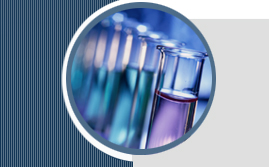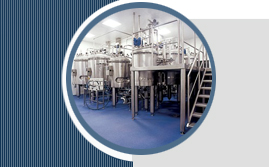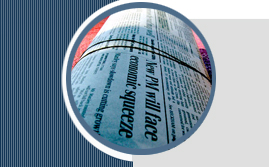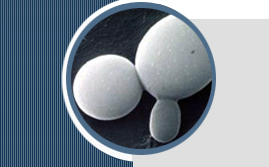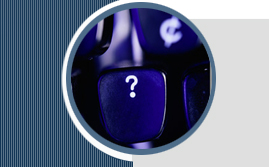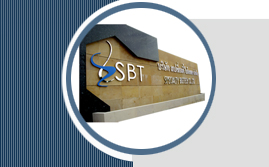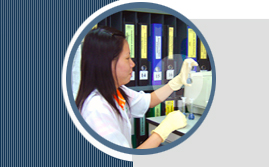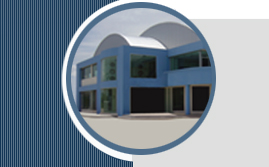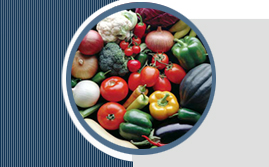| |
Fish
-T
Copyright ©2005 . Specialty Biotech Co.,Ltd. All Rights Reserved.
Amatanakorn Industrial Park 700/137 Moo 5, Klongtumroo
Muang, Chonburi 20000 ThailandTel +66 (0)3845-8698 Fax +66 (0)3845-8697
Email: contact@sbtthai.com
he use of immunostimulants in fish larval aquaculture. (For more detail please visit http://www.elsevier.com/locate/fsi )
- Short- and long-term effects of a dietary yeast ß- glucan (Macrogard) and alginic acid (Ergosan) preparation on immune response in sea bass ( Dicentrarchus labrax ). (For more detail please visit http://www.elsevier.com/locate/fsi )
- Influence of the sequence of administration of ß-glucans and a Vibrio damsela vaccine on the immune response of turbot (Scophthalmus maximus L.). (For more detail please visit http://www.elsevier.com/locate/vetimm)
- Influence of dietary glucan and vitamin C on non-specific and specific immune responses of rainbow trout (Oncorhynchus mykiss)(For more detail please visit http:// www.elsevier.nl/locate/aqua-online)
-Enhanced lysozyme production in Atlantic salmon (Salmo salar L.) macrophages treated with yeast ß-glucan and bacterial lipopolysaccharide. (For more detail please visit http://www.idealibrary.com)
The use of immunostimulants in fish larval aquaculture
Ian Bricknell a , * , Roy A. Dalmo b ,
a FRS Marine Laboratory, PO Box 101, 375 Victoria Road, Torry, Aberdeen AB11 9DB, UK b Department of Marine Biotechnology, Norwegian College of Fishery Science, University of Troms , N 9037 Troms , Norway
ABSTRACT
The production of fish larvae is often hampered by high mortality rates, and it is believed that most of this economic loss due to infectious diseases is ca. 10% in Western European aquaculture sector. The development of strategies to control the pathogen load and immuno-prophylactic measures must be addressed further to realise the economic ‘‘potential’’ production of marine fish larvae and thus improve the overall production of adult fish. The innate defence includes both humoral and cellular defence mechanisms such as the complement system and the processes played by granulocytes and macrophages. A set of different substances such as b -glucans, bacterial products, and plant constituents may directly initiate activation of the innate defence mechanisms acting on receptors and triggering intracellular gene activation that may result in production of anti-microbial molecules. These immunostimulants are often obtained from bacterial sources, brown or red algae and terrestrial fungi are also exploited as source of novel potentiating substances. The use of immunostimulants, as dietary supplements, can improve the innate defence of animals providing resistance to pathogens during periods of high stress, such as grading, reproduction, sea transfer and vaccination. The immunomodulation of larval fish has been proposed as a potential method for improving larval survival by increasing the innate responses of the developing animals until its adaptive immune response is sufficiently developed to mount an effective response to the pathogen. To this end it has been proposed that the delivery of immunostimulants as a dietary supplement to larval fish could be of considerable benefit in boosting the animals innate defences with little detriment to the developing animal. Conversely, there is a school of thought that raises the concern of immunomodulating a neotanous animal before its immune system is fully formed as this may adversely affect the development of a normal immune response.
Keywords: Immunostimulants; Fish larvae; Aquaculture; Toll-like receptors
Credited by:
© 2005 Elsevier Ltd. All rights reserved. Fish & Shellfish Immunology 19 (2005), 457 - 472
Short- and long-term effects of a dietary yeast ß -glucan (Macrogard) and alginic acid (Ergosan) preparation on immune response in sea bass ( Dicentrarchus labrax )
M. Bagni, N. Romano, M.G. Finoia, L. Abelli, G. Scapigliati, P.G. Tiscar, M. Sarti, G. Marino*
ICRAM, Aquaculture Department, Via Casalotti 300, 00166, Rome, Italy.
ABSTRACT
The present study investigated the immunomodulatory activity of Ergosan, an algal extract containing alginic acid, and Macrogard, a yeast extract containing b -glucans, on innate and specific immunity in sea bass ( Dicentrarchus labrax ). Four cycles of experimental feeding using normal fish feed formulation (control group) supplemented with Ergosan (0.5%) or Macrogard (0.1%) were performed at 60-day intervals (15 days of treatment C 45 days of suspension). Serum complement, lysozyme, total proteins and heat shock protein (HSP) concentrations were measured at 15, 30 and 45 days from the end of the first 15-day feeding cycle (short term) and 45 days after the end of each feeding cycle over a 35-week period (long term). The percentage of B- and T-lymphocytes in peripheral blood leucocytes and gut were measured over long-term trial. Significant elevation ( P ! 0.05) in serum complement activity occurred in sea bass fed with alginic acid and glucans, at 15 days from the end of first cycle of treatment. Significant elevation ( P ! 0.05) in serum lysozyme, gill and liver HSP concentration were observed in the same experimental groups at 30 days from the end of treatment, whereas a significant increase ( P ! 0.05) of complement activity was only observed in fish that received an Ergosan diet. At 45 days from the end of treatment, complement, lysozyme and HSP concentration did not differ among groups. Over the long-term period, no significant differences were observed in innate and specific immune parameters, survival, growth performances and conversion index in treated and control fish. A dramatic decrease of both innate and acquired immune parameters was observed during the winter season in all groups, followed by a partial recovery when water temperature increased. Reduction in complement and lysozyme activities was significatively correlated ( P ! 0.01) to water temperature variation. The results suggested the potential of alginic acid and b -glucans to activate some innate immune responses in sea bass, and particularly under conditions of immunodepression related to environmental stress.
Keywords: Immunostimulant; Complement; Lysozyme; Lymphocytes; Heat shock proteins
Credited by:
© 2004 Elsevier Ltd. All rights reserved. Fish & Shellfish Immunology 18 (2005) 311 - 325
Influence of the sequence of administration of ß-glucans and a Vibrio damsela vaccine on the immune response of turbot
(Scophthalmus maximus L.)
A. Figueras*, M. M. SantareÂm, B. Novoa
Instituto de Investigaciones Marinas, Consejo Superior de Investigaciones CientõÂficas (CSIC), Eduardo Cabello 6, 36208 Vigo, Spain
ABSTRACT
Yeast (Saccharomyces cerevisae) ß-1,3 glucans were used as adjuvant in a Vibrio damsela vaccine for turbot (Scophthalmus maximus L.). Turbot were injected with the adjuvant prior, at the same time and after the vaccine. Several immune parameters (index and rate of phagocytosis, passive haemolytic plaque numbers, and agglutinating antibody titers) were determined at different times postinoculation. The highest activity of all the immune parameters was obtained when glucans were injected after the bacterin. It is concluded that the sequence of glucan administration is critical when used as a vaccine adjuvant.
Keywords: Immunostimulant; Glucan; Turbot; Vaccine; Immune response
Credited by:
©1998 Elsevier Science B.V. All rights reserved. Veterinary Immunology and Immunopathology 64 (1998), 59-68
Influence of dietary glucan and vitamin C on non-specific and specific immune responses of rainbow trout (Oncorhynchus mykiss)
Viviane Verlhac a , Jacques Gabaudan a, Alex Obach c, Willy Schiiep b, Reid Hole c
a CRNA, Socihe’ Chimique Roche, BP 170, 68305 Saint-Louis Cedex, France
b Analytical Department, F. Hoj7inann-La Roche Ltd., CH-4002 Basle, Switzerland
c Nutreco Aquaculture Research Centre (ARC), P.O. Box 353, N-4033 Forus, Norway
ABSTRACT
A trial was conducted to determine the effect of a combination of dietary glucan and vitamin C on the immune response of rainbow trout. After 3 weeks of adaptation on a control diet (without glucan but containing 150 ppm vitamin C), rainbow trout were fed the experimental diets containing yeast glucan and vitamin C at 150, 1000 and 4000 ppm for 2 weeks and then switched back to the control diet for the following 4 weeks. Macrophage activity (chemiluminescence response), complement activation and lysozyme levels were monitored just after feeding the experimental diets (week 0) and 2 and 4 weeks later. The kinetics of antibody response after vaccination against enteric redmouth disease were determined. The fish were immunised at week 0, at the end of the experimental feeding. Tissue ascorbic acid contents were monitored every 2 weeks and reflected the dietary treatments. No differences were observed in complement levels activated via the classical pathway. Two weeks after feeding the experimental diets, alternative pathway of complement activation and chemiluminescence response were enhanced by high doses of vitamin C. Significant enhancement of macrophage activity was still evident at week 2. No significant differences were observed in lysozyme levels. The specific immune antibody response was enhanced following vaccination, when glucan was also present in the diet.
Keywords: Immunomodulation; Nutrition; Glucan; Vitamin C; Rainbow trout
Credited by:
©1996 Elsevier Science B.V. All rights reserved. Aquaculture 143 (1996), 123-133
Enhanced lysozyme production in Atlantic salmon (Salmo salar L.) macrophages treated with yeast ß-glucan and bacterial lipopolysaccharide
STEINAR M. PAULSEN*, ROLF E. ENGSTAD† AND BØRRE ROBERTSEN
Department of Marine Biotechnology, The Norwegian College of Fishery Science, University of Tromsø, N-9037 Tromsø, Norway
ABSTRACT
Atlantic salmon head kidney macrophages grown in the presence of particulate yeast ß-glucan and bacterial lipopolysaccharide (LPS) showed increased production of lysozyme in the culture supernatants compared to non-treated controls. The increased lysozyme production started at day 3 and was five- to six-fold higher compared to controls at day 6 in culture. ß-Glucan showed an approximate linear dose–response curve between 1 and 250 μg/ml whereas LPS showed a dose–response curve with a well-defined optimum concentration (10 μg/ml). The increase in lysozyme activity was accompanied by an accumulation of lysozyme gene transcript in the stimulated cells. Recombinant human tumor necrosis factor alpha, known for its ability to stimulate lysozyme in human macrophages and to elevate respiratory burst activity of rainbow trout macrophages, failed to stimulate lysozyme production of Atlantic salmon macrophages. Macrophages isolated from fish suffering from a non-lethal Ichthyobodo necator infection displayed a highly increased ability to produce lysozyme in response to both ß-glucan and LPS. As in higher vertebrates, lysozyme production may reflect the dfferentiation stage of the Atlantic salmon macrophages as well as a direct activation of lysozyme gene transcription by biological response modifiers. The rather late increase in lysozyme production induced by ß-glucan and LPS may thus be explained by stimulation of differentiation of the macrophages in culture eventually combined with direct activation of transcription of the lysozyme gene.
Keywords: lysozyme gene expression, lysozyme activity, head kidney macrophages, priming of lysozyme response, lipopolysaccharide, ß-glucan, Ichthyboda necator.
Credited by:
©2001 Academic Press Fish & Shellfish Immunology 11(2001),23–37
|
|
